How to make your own trading bot
 0
0
 1841
1841
Foreword
I’m certainly not a great programmer, but writing this project taught me a lot (and kept me occupied). Most of my code were done on FMZ.COM, and if I were to refactor the python code I would use a more object orientated model. Nonetheless, I was pleasantly surprised with the results I got and the bot has made almost 100% ether profit so far.
What does it do?
It is an arbitrage bot. That means that it earns money from trading the difference between prices on two (or more) exchanges. As of now it is unidirectional and only trades between Etherdelta and Bittrex: they share approximately twenty eth/token pairs. Here’s a diagram to illustrate how it works:
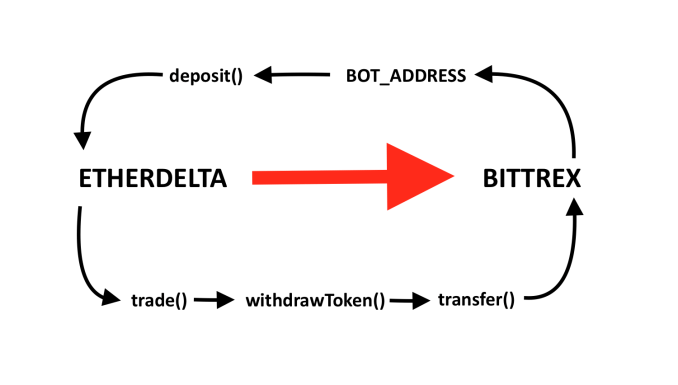 Words followed by parenthesis are ethereum transactions that invoke a smart contract function call.
Words followed by parenthesis are ethereum transactions that invoke a smart contract function call.
The Code
I could have used fmz.com platform python editor to create the transactions and function calls and it would have been fairly straightforward. I needed something more reliable; a failed transaction means losing money. Every single one my GET requests needed a reply, even if the TCP packet got lost or the webserver on the other end was temporarily down. Therefore I decided to implement my own python etherscan API wrapper and used pythereum to create the transactions and etherscan to publish them. I also wrote my own requests.get decorator that is a while loop that only exits once the reply is satisfactory.
Here is the code I used to encode the etherdelta json API responses as hexadecimal, rlp encoded, ethereum transactions (not for the faint hearted):
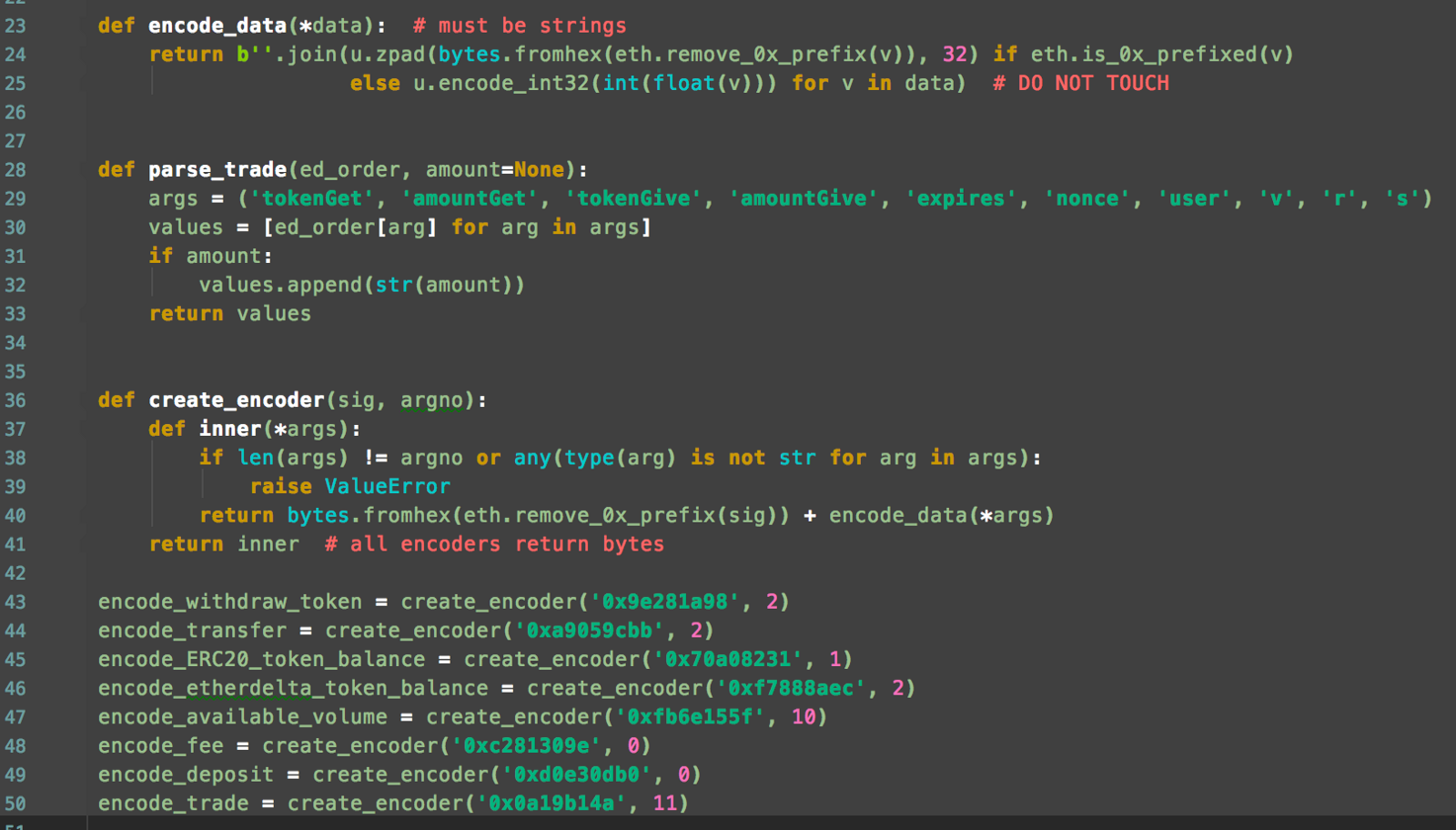
The raw hexadecimal values in the closure at the bottom are the function signatures that correspond to each function. A function signature is derived from the keccak of the function and its arguments. It must be appended to the data parameter of a transaction followed by the data that makes up the arguments. In total my code is around 400 lines long and contained in 5 different files.
The Outcome
I made a couple of graphs from the data I logged using pymatplotlib.
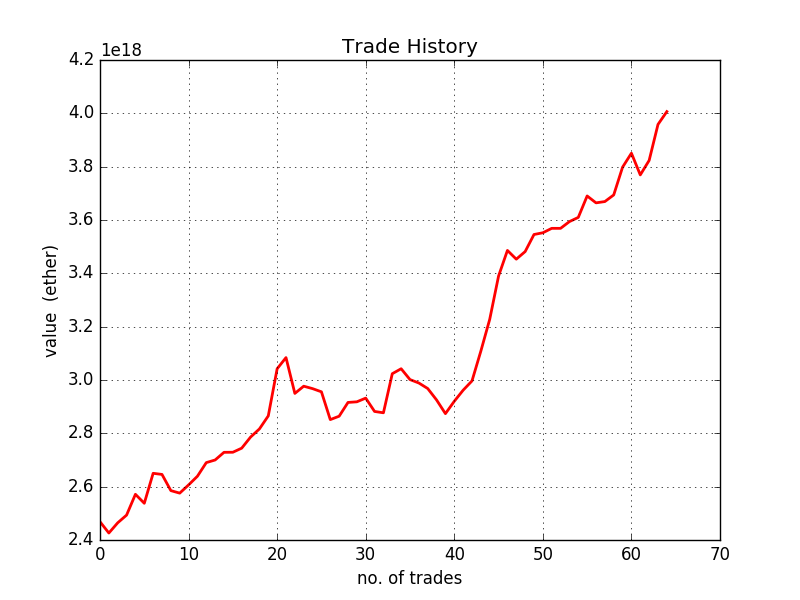
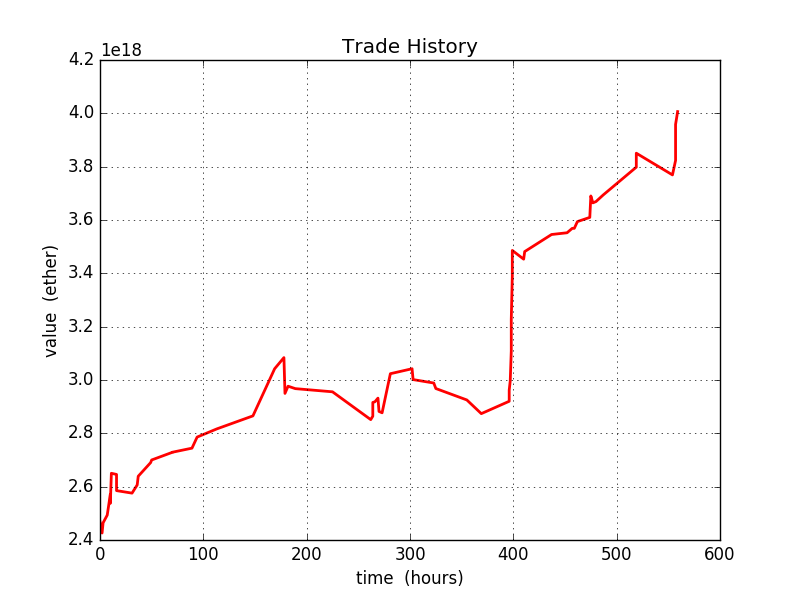
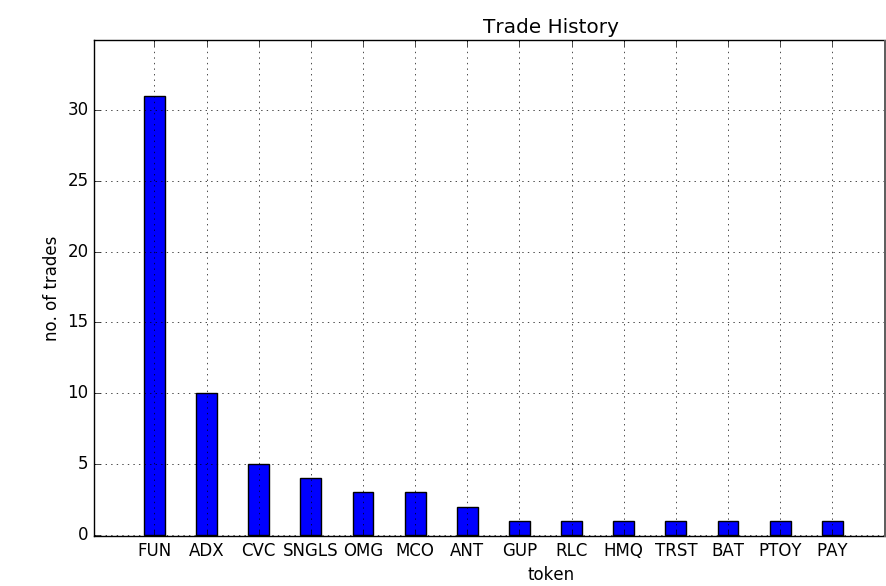
Conclusion
Overall the entire project took me around two weeks during my spare time at school and it was a blast all round. I’ve taken a break from coding vigorously and am currently in the process of planning arbitrage bot v2. The next version is going to include 86 different exchanges and a whole lot of trading pairs.
To the moon!
- 申请增加kucoin的API
- Successful Backtesting of Algorithmic Trading Strategies - Part II
- hbdm和ok合约同时用websocket,huobi发出去pong没反应
- Successful Backtesting of Algorithmic Trading Strategies - Part I
- Value at Risk (VaR) for Algorithmic Trading Risk Management
- Should You Build Your Own Backtester?
- Money Management via the Kelly Criterion
- Sharpe Ratio for Algorithmic Trading Performance Measurement
- Continuous Futures Contracts for Backtesting Purposes
- Research Backtesting Environments in Python with pandas
- Top 5 Essential Beginner Books for Algorithmic Trading
- Can Algorithmic Traders Still Succeed at the Retail Level?
- 网格
- Steps to Becoming a Quant Trader
- 增加期货定单类型
- 扩展API里有添加交易所的API接口么
- 求助,部署的托管着不好使
- 请问如何做一个监控地址的程序
- Everything You Need To Know About Automated Trading
- Automated Trading Systems: The Pros and Cons